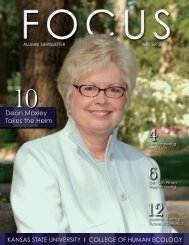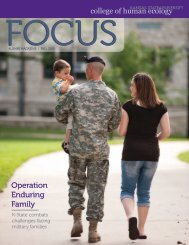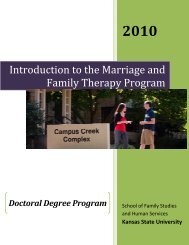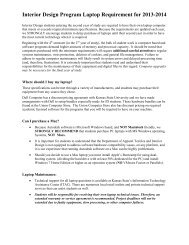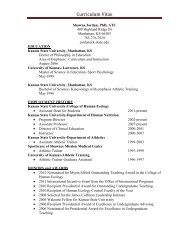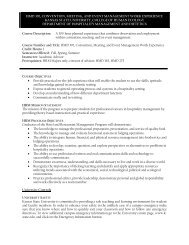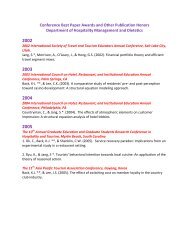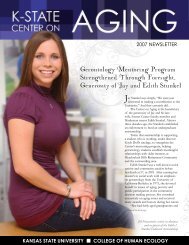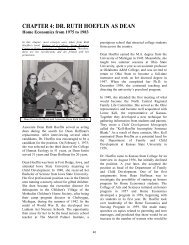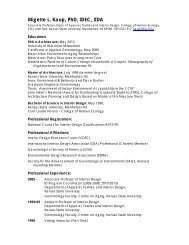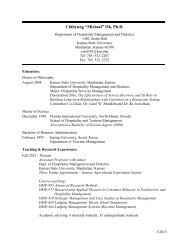Spring 2013 - College of Human Ecology - Kansas State University
Spring 2013 - College of Human Ecology - Kansas State University
Spring 2013 - College of Human Ecology - Kansas State University
You also want an ePaper? Increase the reach of your titles
YUMPU automatically turns print PDFs into web optimized ePapers that Google loves.
FOCUS<br />
Present<br />
A tighter connection<br />
Kinesiology’s movement into the college<br />
brings collaborations even closer<br />
Collaborations between kinesiology and human ecology began more than 20<br />
years ago when K-<strong>State</strong> first <strong>of</strong>fered a dual undergraduate degree in nutrition<br />
and kinesiology. The newest partnership is the Physical Activity and Nutrition<br />
Clinical Research Lab.<br />
This year The Department <strong>of</strong> Kinesiology moved to the <strong>College</strong> <strong>of</strong> <strong>Human</strong> <strong>Ecology</strong>.<br />
The move was logical academically and scientifically, said Virginia Moxley, dean.<br />
“We share a mission to discover, disseminate and apply science-based<br />
knowledge to meet basic human needs and improve the human condition,” said<br />
David Dzewaltowski, head <strong>of</strong> the Department <strong>of</strong> Kinesiology.<br />
Like other areas <strong>of</strong> human ecology, kinesiology utilizes both physical and social<br />
sciences — from physiology to sociocultural studies — to examine and promote<br />
health and well-being on the personal, community and even the global level.<br />
“We look at physical activity from the cellular level up to the societal level,” Dr.<br />
Dzewaltowski said to sum up his group’s center. “We look at exercise as a health<br />
behavior, at health outcomes <strong>of</strong> movement, whether it is sedentary behavior or<br />
intense physical activity.”<br />
Some <strong>of</strong> kinesiology’s current projects include a NASA study on physical<br />
characteristics necessary for an astronaut to perform tasks in space; a project to<br />
identify mechanisms <strong>of</strong> muscular microcirculatory dysfunction in heart failure,<br />
which is being funded by the National Institutes <strong>of</strong> Health; a study to find<br />
community-based solutions to childhood obesity; and a project to examine how<br />
increased body fat and a sedentary lifestyle may lead to the development <strong>of</strong><br />
exercise-induced asthma in children.<br />
While the study <strong>of</strong> physical activity was a central component <strong>of</strong> general<br />
education when K-<strong>State</strong> was established, in 1926 a B.S. degree in physical<br />
education and training was first <strong>of</strong>fered.<br />
By the early 1970s when Charles B. “Chuck” Corbin was department head,<br />
the Department <strong>of</strong> Health, Physical Education, and Recreation was inching its<br />
way toward a culture change. Corbin, who became known as “father <strong>of</strong> the<br />
conceptual physical education movement,” set in motion the vision for modern<br />
kinesiology at K-<strong>State</strong>. Corbin moved the department from a focus on learning<br />
how to perform and teach physical activity to a focus on studying the concepts<br />
underlying physical activity. The department then restructured and eliminated<br />
programs, changed its name to kinesiology, and evolved during the 1990s into<br />
14






